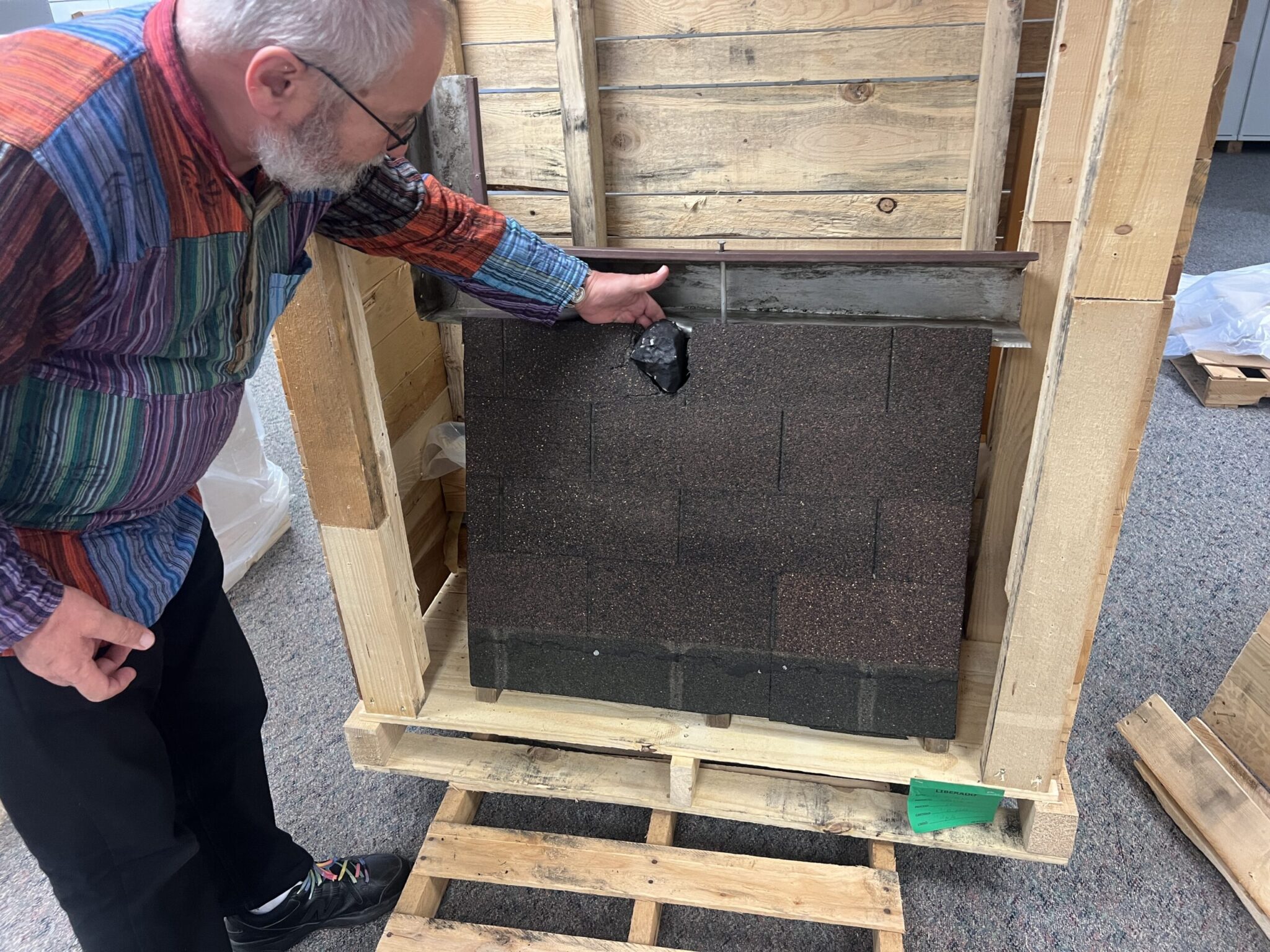Meteor shower ‘hits’ Peabody Museum
The Peabody Museum of Natural History has nearly doubled its collection of meteorites, thanks to a donation of an estimated 1,800 meteorite specimens from the Planetary Studies Foundation, becoming one of the largest meteorite collections in the world.

Lily Belle Poling, Contributing Photographer
The Peabody Museum of Natural History is now home to one of the largest and most diverse meteorite collections in the world — one that has drawn interest from researchers around the globe.
The Planetary Studies Foundation, a northwest Illinois-based nonprofit organization that has collected meteorites for several decades, made their second donation of meteorites to the Peabody Museum this past April. The donated collection is estimated to contain around 1,800 specimens.
The foundation’s first donation included 1,300 specimens, which they gave to the Peabody for preservation in 2017.
“They’re very valuable, scientifically valuable,” Stefan Nicolescu, mineralogy and meteoritics collection manager and a research scientist at the Peabody Museum, told the News.
The most recent collection is especially significant, Nicolescu said, because the vast majority of the samples are meteorite-type specimens — samples that can be analyzed to identify and classify new meteorite types based on their mineral characteristics.
According to Nicolescu, the collection is also significant because it includes 54 meteorites obtained from Antarctica. Ordinarily, he explained, Antarctic meteorites are typically collected by government associated agencies or expeditions.
Yale now houses the only Antarctic meteorite collection not related to a government agency. These Antarctic meteorites were collected in 2000 and 2002 on expeditions organized by Paul Sipiera, the president and CEO of the Planetary Studies Foundation.
Jim Lovell, who is one of the first three astronauts to fly to and orbit the Moon on the Apollo 8 mission and commander of the Apollo 13 lunar mission, collected one of these Antarctic meteorites, Nicolescu explained.
Other highlights of the new collection include rare specimens from Mars and the Moon, samples from the Costa Rican meteorite Aguas Zarcas that contain amino acids — the building blocks of proteins found in life forms — and a grapefruit-sized meteorite that crashed through a roof in Illinois.
Originally from Transylvania, Romania, Nicolescu’s fascination with meteorites comes from an unexpected source: chocolate chip cookies. Much like the ingredients used when baking, he explained, meteorites are the basic ingredients of the solar system. Looking at meteorites can provide insight into those building blocks — the origins of the solar system.
“If you take all those ingredients in the proper ratio, and you put them in a ball, you don’t have a chocolate chip cookie, you have just a mixture of ingredients,” he said. “Just like with the chocolate chip cookies, [it took] physics, chemistry and time for that ugly material to end up with the atmosphere on Earth … We humans and life on Earth — we are the chocolate chip cookies of the solar system,” he added.
Between the two donations, Yale now has representatives from all of the known meteorite types that have been classified so far.
One such meteorite type is pallasite, which makes up less than one percent of all collected meteorites around the world. Although the Peabody already owned some pallasite specimens, Sipiera donated a slice of pallasite — the Seymchan pallasite slice — from his personal collection alongside the Planetary Studies Foundation donation.
Compared to the bigger and bulkier pieces that Yale previously owned, Nicolescu told the News, the new pallasite slice has a “stained-glass view.”
The Seymchan pallasite slice will be displayed in the Peabody Museum upon its reopening in 2024.
Nicolescu believes that these specimens can be educational tools for Yale students, from undergraduates to graduate researchers and postdoctoral fellows.
“I’ve never heard of anything like it,” said Sofia Arbelaez ’27, a first-year undergraduate who is interested in studying natural and biological sciences. “It’s so exciting that those a part of and around the Yale community have the chance to learn more about our universe so easily.”
The Peabody Museum also plans to share meteorite samples with other scientists around the world.
Jay Ague, curator-in-charge of mineralogy and meteoritics for Peabody Museum and a professor of Earth and planetary sciences, told the News that the new collection will help uncover new information about the early solar system.
“The donation is remarkably timely given the rapidly growing interest in lunar and planetary exploration,” Ague said. “Scientists will be unlocking the secrets these meteorites hold regarding the origins of our solar system and beyond for many years to come. And who knows, the discoveries made by studying these incredible specimens might ultimately help humans become multiplanetary!”
Using the meteorites, for instance, could help scientists conduct geochemical fingerprinting, a technique that analyzes chemical patterns in rock samples to understand the geologic processes that formed them.
It’s a technique that Nicolescu compared to the DNA sequencing of organisms. He explained that experts believe that the process is important for understanding how the solar system formed, how the Earth formed and how Earth systems evolved.
“Each meteorite in itself, it’s basically an entire scientific library,” Nicolescu told the News. “You just have to know the language to read it and you have to have the methods to extract the book from each of them.”
The solar system formed about 4.6 billion years ago.







